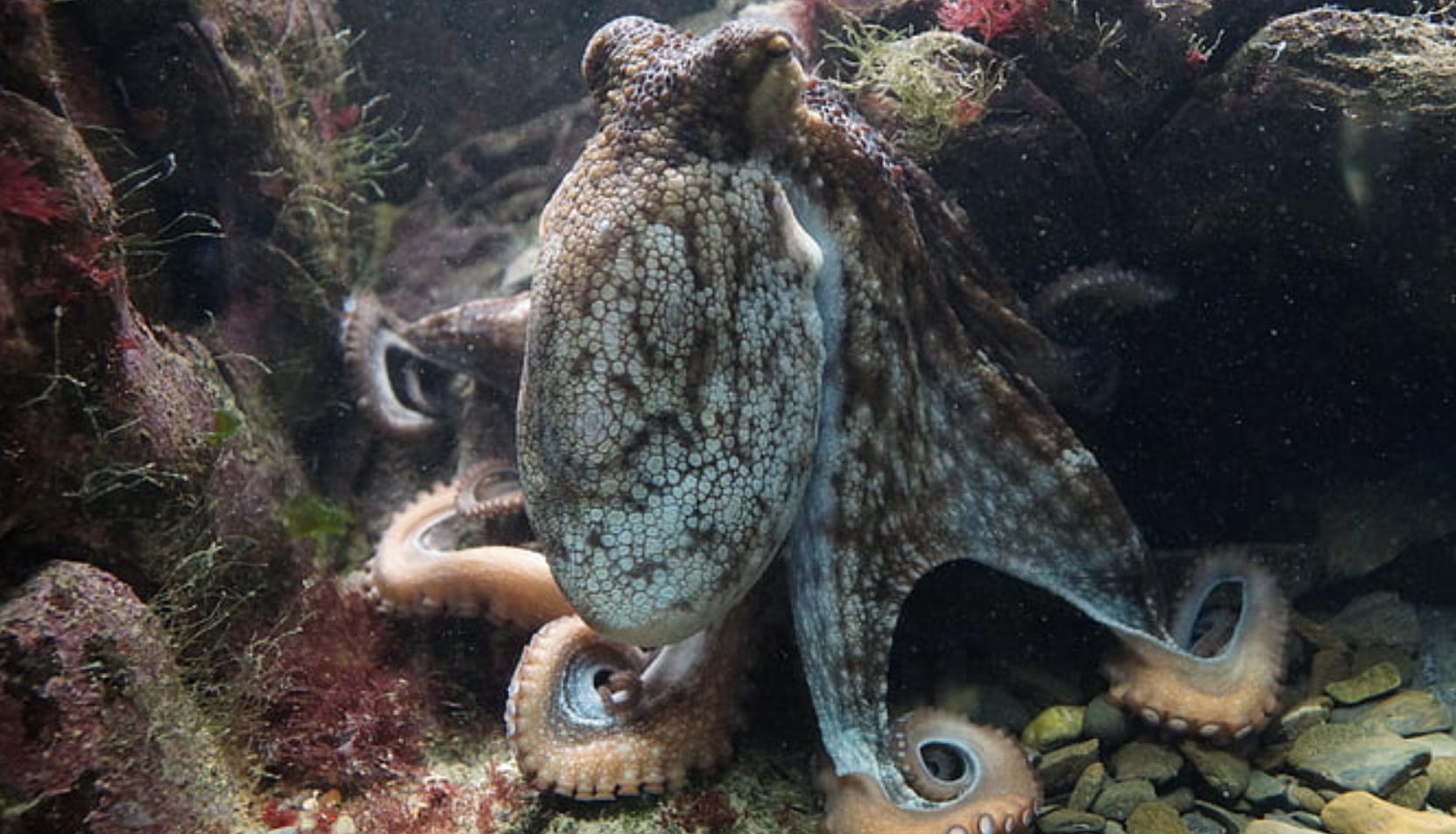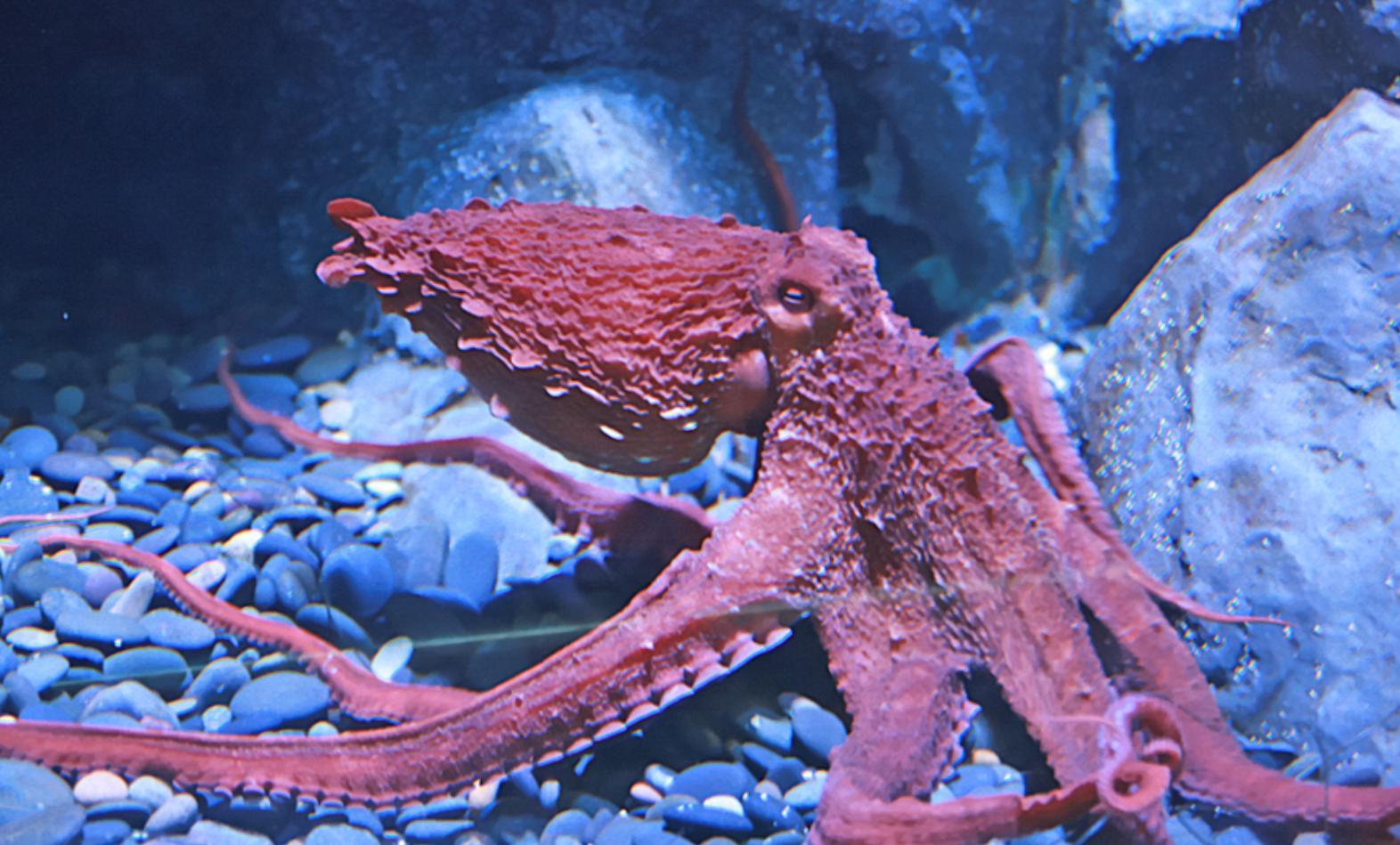Different Types of Octopus Species


There are several species or types of octopus, such as the common octopus, the greater blue-ringed octopus, the dumbo octopus, the giant octopus, the mimic octopus, the Caribbean reef octopus, the big blue octopus, the Atlantic white-spotted octopus, the star-sucker pygmy octopus and the common blanket octopus.
Octopuses are one of the most fascinating marine animals on the planet. Not only are they physically beautiful and marvelous, but they are one of the most intelligent animals in the world, whether from land or sea. They have an incredible memory and a surprising aptitude for learning. This is particularly fascinating when we learn the fact that octopus are invertebrates since we normally see vertebrate species as having more advanced intelligence.
Within the group of animals known as octopus, there is incredibly diversity in form and behavior. thedailyECO discovers more about such diversity by providing this list of 18 different octopus species with photos.
- What are octopus?
- Common octopus (Octopus vulgaris)
- Greater blue-ringed octopus (Hapalochlaena lunulata)
- Dumbo octopus (Grimpoteuthis spp.)
- Giant Pacific octopus (Enteroctopus dofleini)
- Mimic octopus (Thaumoctopus mimicus)
- Caribbean reef octopus (Octopus briareus)
- Big blue octopus (Octopus cyanea)
- Atlantic white-spotted octopus (Octopus macropus)
- Star-sucker pygmy octopus (Octopus wolfi)
- Common blanket octopus (Tremoctopus violaceus)
- Other types of octopuses
What are octopus?
Octopus are invertebrate marine mollusks that are considered cepahalopods. This means they are related to similar marine animals such as cuttlefish and squid. The taxonomy of octopuses places them in the following ranks:
- Phylum: Mollusca
- Class: Cephalopoda
- Order: Octopoda
Learn more about the octopus with our article on the animals with the biggest brains.
The Octopoda order is characterized by the fact its members have eight arms with tentacles around a mouth located under the mantle. This is the structure that appears underneath the head. While it is smaller than the head, it acts as their main body and houses their various vital organs.
This order is divided into two suborders:
- Cirrina: they have a pair of cilia on the suckers, two fins on the mantle, and no ink glands.
- Incirrina: they lack cilia and fins, but they do have ink sacs.
Each species has different characteristics. We review these characteristics by looking at the different types of cotopus species with photos of each.
Common octopus (Octopus vulgaris)
It is considered one of the most intelligent invertebrates that exist. This quality is put to great advantage in their natural habitat. They are able to solve various problems within said habitat, often related to either evading predators or catching prey of their own. They mainly feed on crustaceans and smaller mollusks.
Common octopuses are very skilled with their arms which contain two thirds of their total neurons. They can change color and their malleable body means they can move into very small spaces. They inhabit both temperate and tropical waters.

Greater blue-ringed octopus (Hapalochlaena lunulata)
The greater blue-ringed octopus measures just between 4-6" (10-15 cm). It is extremely poisonous and its toxins are sufficiently potent to kill a human being in the right circumstances. It is identified by its large large blue rings that contrast against its yellow skin. When it feels threatened, it raises the intense blue tone of its rings to warn any potential predators of their great danger.
Learn more about deadly sea animals with our article on the most venomous fish in the world.

Dumbo octopus (Grimpoteuthis spp.)
Several species are known as dumbo octopuses, all of which can be found in the genus Grimpoteuthis. They are characterized by having two extensions on the mantle similar to ears, like those of the Disney elephant also named Dumbo. They are not, in fact, ears, but fins which the dumbo octopus use to swim.
These types of octopus live at great depths of between 3,000 to 4,000 meters. They feed on invertebrates and swallow their prey whole. This is unlike other octopuses that have a radula to gnaw at their prey. They belong to a larger group known as umbrella octopuses. They make up the family Opisthoteuthidae. These are characterized by the fact they have skin that joins their arms, making them look like an umbrella.

Giant Pacific octopus (Enteroctopus dofleini)
Appropriately monikered, the Giant Pacific octopus is the largest of all types of octopus species. The largest ever recorded measured over 30 feet/9 meters. It lives in the North Pacific, both on the coasts of America and Asia. It is distributed from the intertidal zone to depths of 2 thousand meters, to which it is adapted in terms of low oxygen and low temperature.
Discover more about the depths of the world's oceans with our article on what is the Mariana Trench?

Mimic octopus (Thaumoctopus mimicus)
Although many octopuses have the ability to change color, this octopus species is particularly peculiar. In addition to changing color, the mimic octopus can also mimic the shape and form of other marine animals such as jellyfish, corals or sponges. They do so to better hide from predators, as well as to make these animals their prey.
Learn more with our article on the different types of Mediterranean jellyfish species.

Caribbean reef octopus (Octopus briareus)
It inhabits coral reefs in the Caribbean and the western Atlantic. It uses a prey capture technique in which it launches its arms out. These arms are joined together by a membrane. This functions as a kind of trap net to capture their prey.

Big blue octopus (Octopus cyanea)
Also known as the day octopus, the big blue octopus is native to coral reefs in the Indian and Pacific oceans. They have the ability to change both their skin color and its texture. The mantle measures 6"/16 cm and the tentacles are 31"/80 cm in length. It is peculiar because its habits are diurnal and crepuscular, while most octopuses are nocturnal.

Atlantic white-spotted octopus (Octopus macropus)
This type of octopus species is also known as a grass octopus or a grass scuttle. Their arms are particularly long, with the front pair being around 3.2'/1 m, although the others are shorter. The mantle is small at 5"/13 cm long. It is known as the white-spotted octopus because it is red with white dots all over the body.

Star-sucker pygmy octopus (Octopus wolfi)
It lives in the Pacific Ocean and is the smallest octopus that exists, measuring about 1.2 inches/3 centimeters in total, of which over half is made up of the mantle. The arms are short and of different lengths. Males have filament-edged star-shaped suckers. It has been suggested that these are used for reproduction.

Common blanket octopus (Tremoctopus violaceus)
Also known as the violet blanket octopus, it lives in the warm open waters of the Atlantic Ocean. One of the distinctive traits of this species of octopus is that it is very sexually dimorphic. Females reach 6.6 feet/2 meters in length, while the males are only around 1"/2.5 cm.
When males and females are growing and measure less than 7 centimeters, it has been observed that they incorporate the tentacles of the Portuguese man-of-war to use for defense and to obtain food. They lose them when they grow up, so one assumption is that males stay small to maintain their size-related advantage.

Other types of octopuses
- Musky octopus (Eledone moschata)
- California two-spot octopus (Octopus bimaculoides)
- Spoonarm octopus (Bathypolypus arcticus)
- Combed octopus (Eledone massyae)
- Vent octopus (Vulcanoctopus hydrothermalis)
- Coconut octopus (Amphioctopus marginatus)
- Glowing sucker octopus (Stauroteuthis syrtensis)
- Curled octopus (Eledone cirrhosa)
You have now met many very different types of octopuses, but maybe you would like to learn a little more about where they live with our article on what is an aquatic ecosystem?
If you want to read similar articles to Different Types of Octopus Species, we recommend you visit our Wild animals category.
- Beatty, R., Beer, A., & Deeming, C. (2010). The book of nature. Great Britain: Dorling Kindersley.















